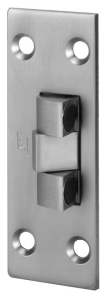Everything you need to know about Commercial Door Hinges: Most Common Types of Commercial Hinges
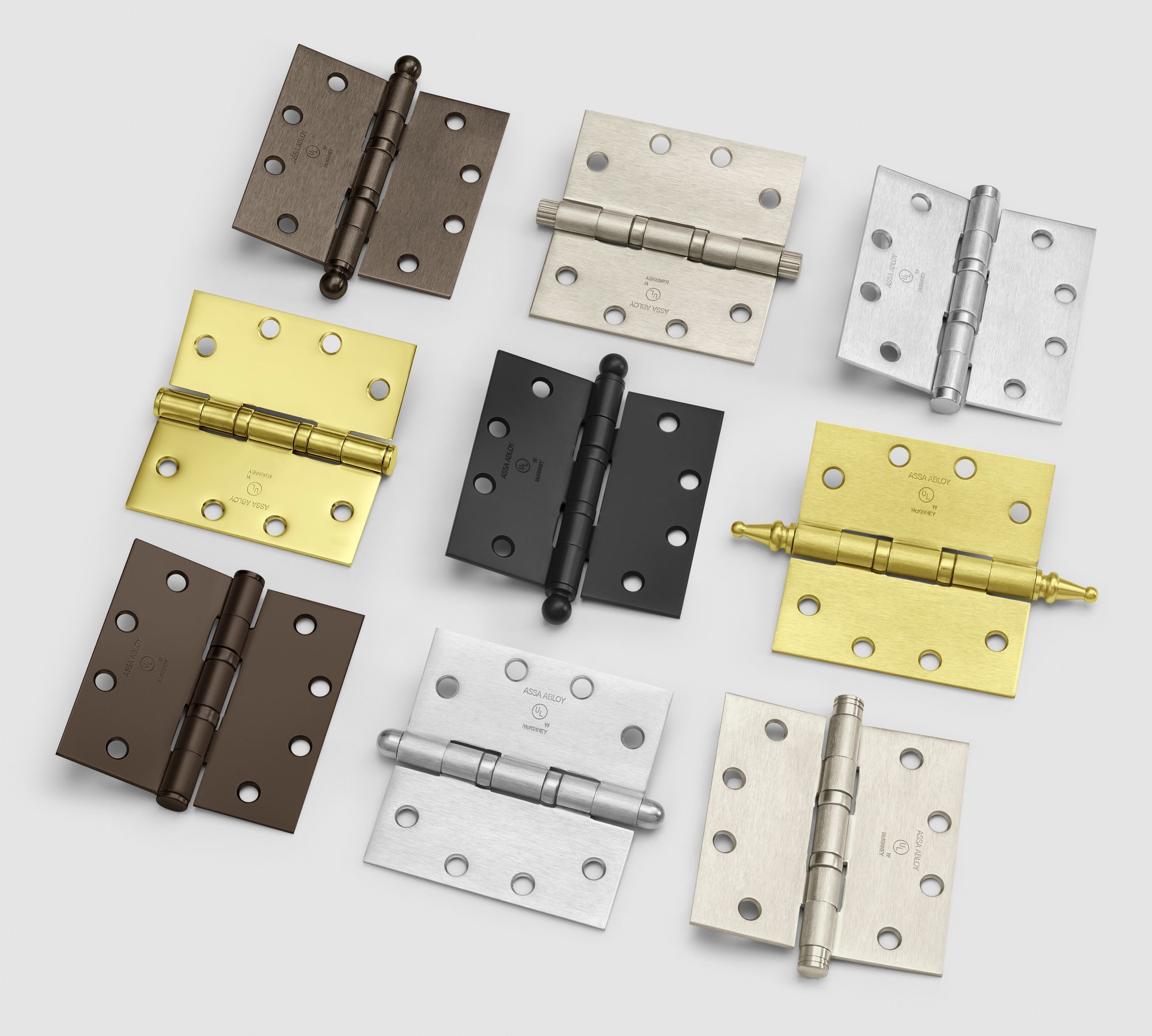
Standard Butt Hinge
Also known as the “mortise hinge,” a butt hinge is the most common type of hardware that you will find in commercial and residential applications. This is the standard two-leaf design joined by a single pin. The leaves “butt” together when the door is closed. Butt hinges are a good option for lightweight use, and they can be used in exterior and interior applications.
These come in full mortise, half mortise, full surface, and half surface styles. These work for average weight doors and high-frequency industrial doors, as well as heavier wood and metal door types.
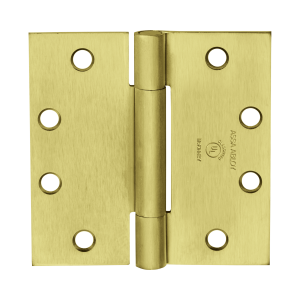
Barrel Hinge
This type of hinge uses a thicker central barrel instead of a pin, and it’s secured by a pivot. The barrel is hollow and cylindrical, which allows for rotational bearing force to go around the pivot. This gives it a screw shape that can be used for fastening and driving the hinge.
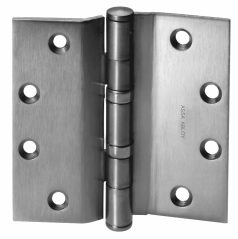
Full Mortise Hinge
With this hardware, one or two leaves, depending on the custom design, are mortised into the door or the cabinet face, as well as the door jamb. The hinge is installed flush with the surface of frame and door after installation, which creates a smooth quality to the finish. These hinges require a bit more finesse and skill so that the door operates correctly.
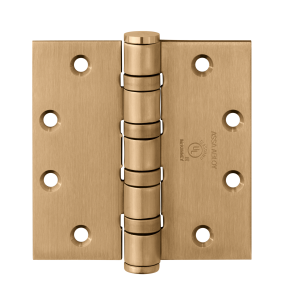
Pivot Hinge
Pivot hinges are used when you need a secure, complete hinge that is installed top-to-bottom. This allows a door to completely revolve and spin, while the hinge stays in place. Shower doors are mounted with a hinge at the top corners of the door, which allows doors to swing in 180-degree revolutions. For a true revolving door, pivot hinges are installed in the center.
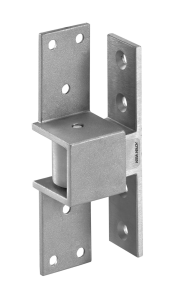

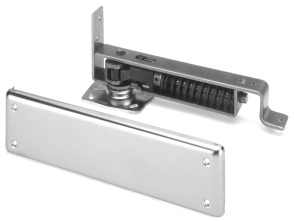
Gate Hinge
Just like a door, a gate hinge connects the gate to a post. The type of hinge is different depending on the size and strength needed for the gate. Aluminum chain link gates are different, and they typically only need lightweight hinges. However, wood gates are heavier and require hinges with thicker materials to handle a heavier, thicker post and gate.
If the gate requires a spring back after it’s opened, then you should get a double-acting spring hinge. If the gate only swings in one direction, it can use a single-acting spring butt hinge. Barn doors typically have a heavy-duty hinge. There are five main types of gate hinges including surface mounted, spring hinges, heavy-duty, pintle hinges, and dummy strap butt hinges.
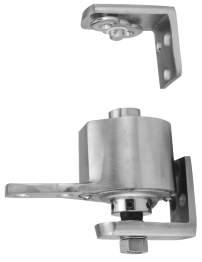
Piano Hinge
Also called a continuous hinge, a piano hinge runs the full length of the door. They are available in different thicknesses, widths, finishes, and customized designs depending on the length of the door and application. They are best used for industrial applications where the door may face frequent and intense use. The original purpose of this hinge was for attaching piano lids so they were able to fold down.
Piano hinges are also used for shed and barn doors, as well as fire doors, marine doors, prison cell doors, and heavy-duty gates. The type of piano hinge changes based on the door weight and width as well if it’s a wall, post-frame, revolving door, or other type of heavy-duty door.
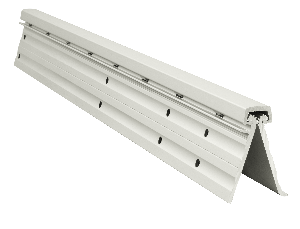
Continuous Aluminum Geared Hinges
These Pemko hinges are typically full mortise, half mortise, half surface, or full surface. Made from aluminum materials, these hinges can be custom-made for medical or other health facility environments.

Continuous Pin and Barrel Hinges
These are full mortise, half mortise, full surface, and half surface hinges that come with pin and barrel hinge guards. These are typically used for behavioral health environments. They may have custom leaves or springs depending on the type of door and wall frame.

Electrified Hinges or Power Transfer Hinges
These are custom-made hinges that incorporate power transfer cables into a hinge. Electrified hinges can be found in butt hinge, continuous pin and barrel, and aluminum continuous geared styles. Hinges like this are commonly used for security access doors, providing easy installation for access control, alarms, and other protected entryways.
PoE Hinges: Power-over-Ethernet hinges also work with electrified hinges to provide more communication between devices and your security doors.
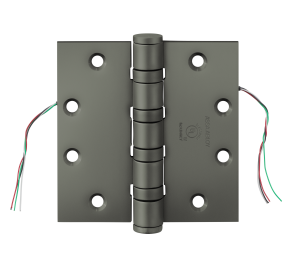
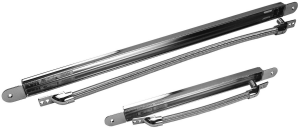
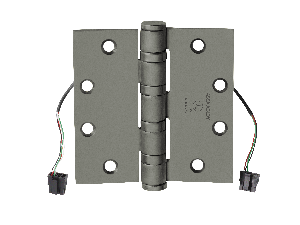
Decorative Hinges
The decorative hinge has different tips with split finishing. They also may use olive knuckles or contain a unique square barrel. For commercial purposes, these decorative hinges have screw holes that form a half-moon shape.
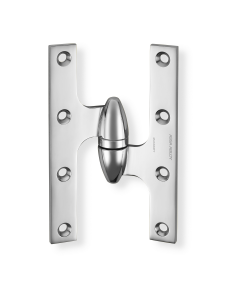

Concealed Hinges
If you don’t want the hinge to show, then this concealed hinge is perfectly disguised. This improves the aesthetic of your door whether it’s open or closed.

Specialty Hinges
Swing clear hinges, pocket pivot hinges, raised barrels, slip-in hinges, interim hinges, and hinge pin doorstops are a few of the specialty hinges available. These are typically used depending on the type of door and movement that you desire for the application.
These are thicker hinges also called a spring pivot hinge and double-acting spring hinge. These can come in adjustable, custom-made styles depending on the type of door. The double-acting door spring is a heavy-duty, horizontal spring style that works with heavy-weighted metal doors.
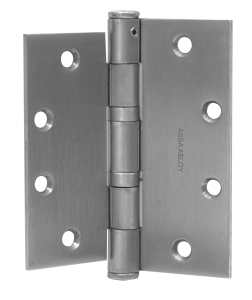

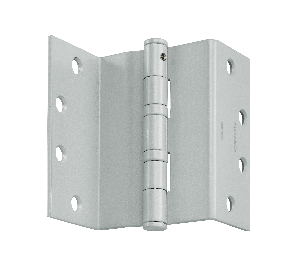
Rescue Hardware
Hinge rescue hardware allows doors to open in both directions without anything damaging the frame. These come in double-lipped strike and combination strike and stop designs.

